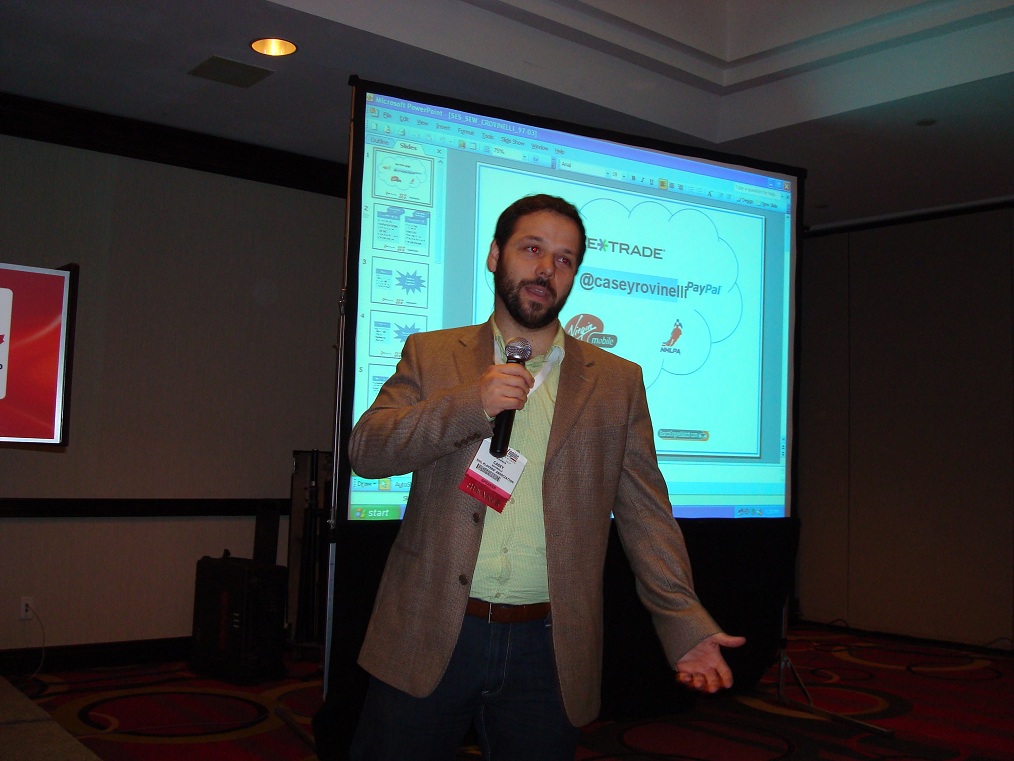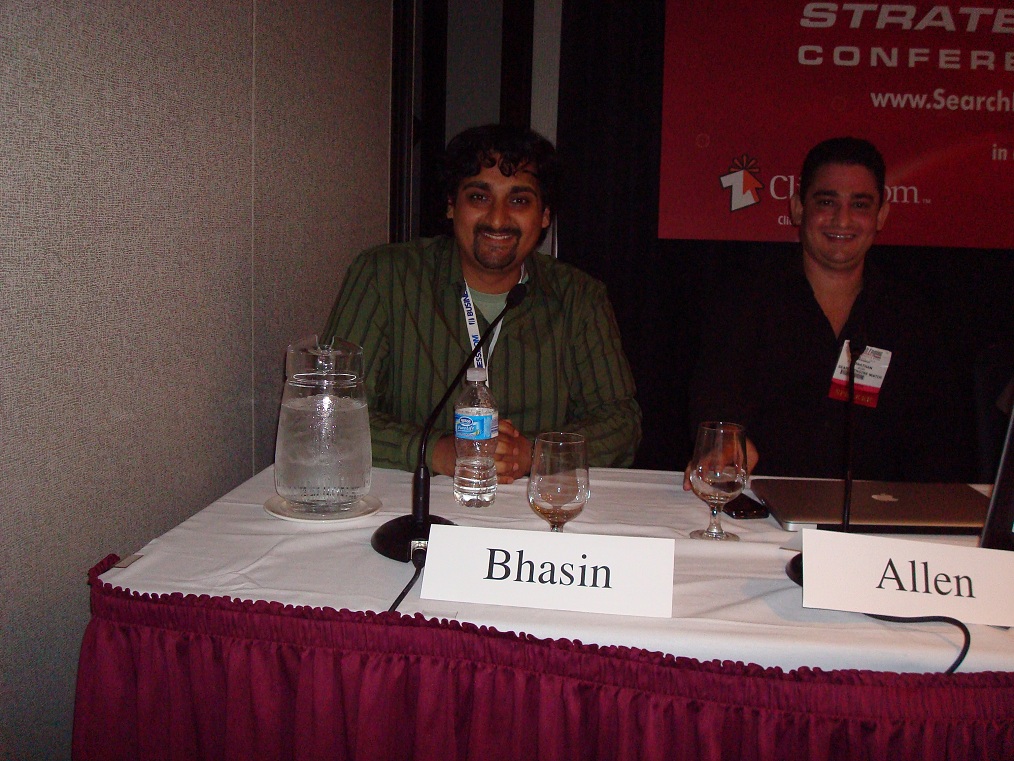 It’s a common story: an online marketing professional returns from a conference full of exciting new ideas and tactics, only to fail at selling those ideas internally. In many cases, marketing and IT/development professionals don’t always understand each other, and as a result potentially high value projects stall out and never see the light of day.
It’s a common story: an online marketing professional returns from a conference full of exciting new ideas and tactics, only to fail at selling those ideas internally. In many cases, marketing and IT/development professionals don’t always understand each other, and as a result potentially high value projects stall out and never see the light of day.
How can you get your marketing and IT teams working together? The following panel of speakers moderated by Tracy Falke, Social Media Specialist at Freestyle Interactive tackle the subject matter:
- Jonathan Allen, Director, SearchEngineWatch
- Puneet Bhasin, Independent IT Consultant,
- Casey Rovinelli, Director, Digital Marketing, National Hockey League Players’ Association
Casey Rovinelli, Director, Digital Marketing, National Hockey League Players’ Association

Casey Rovinelli started things off by discussing that the world is technology driven, and that we need IT to get things done.
What are the common types of things IT says to marketing?
- It’s un-realistic – we can’t do that.
- Too many changes – it’s not possible with current resources.
- Where are we going? (And why are we doing this?)
- They don’t understand – marketers don’t understand our technology.
- It’s a pain!
What are the common types of things marketing says to IT?
- Not design focused, too slow – why can’t it be done quicker?
- Too expensive – is that how much it really costs?
- They don’t understand – we’re trying to build our brand.
- You’re a pain!
We need to fix three things to get marketing and IT aligned:
- We need to get people talking to people – take accountability, talk and sell. Create a social contract between IT and marketing. Talk to each other and communicate so everything is clear, don’t provide unspecific actions. Build the roadmap together instead of approaching it in silos.
- Fix the product/process – try out agile development (or some derivative therof). To succeed in modern digital marketing you need to have some type of development process that’s quick to bring to market. An inclusive, not an exclusive process.
- The actual technology – get a sandbox so that everyone can experiment together, prototype in real-time and “just go.” Work in the sandbox in order to find efficiencies together.
Marketing and IT should not be an “us vs them” mentality, they need to develop an iterative process and work together so that everyone is on the same team. Break barriers down and remove conflicts in order to align team members.
Jonathan Allen, Director, SearchEngineWatch

Jonathan started things off by sharing Swam Theory: essentially all birds fly together by keeping an equal distance from the bird next to them. How does this apply to SEO? By getting team members to worry only about what matters to them.
Create categories and classifications for different groups so they understand who owns what (i.e., search, social media, development, etc.). Use visualizations instead of words to help team members see what is relevant to whom.
Marketing typically does a terrible job of explaining what they want to IT, and IT does a terrible job of explaining what they want to marketing. How can you get them together?
Show goals and examples of what is possible – both groups need to help the other see what they are driving at. Present to the other group your ideas and get them excited about the possibility of success. Ensure that all parties actually understand the technologies (and marketing strategies) behind what they want to implement. IT can understand marketing if it’s explained right and marketing can understand IT if they slow down and clarify.
Internally sell different marketing ideas but bring IT with you during that process. It doesn’t help as much to bring them in late in the process.
Puneet Bhasin, Independent IT Consultant

Puneet gave an “insider’s guide” to speaking geek. He constantly deals with “requests vs. reality” and frequently feels like Scotty from Star Trek (i.e. – our website needs more power!). As an IT consultant, he shared the other side of the coin regarding the disconnect between IT and marketing.
Why is there a disconnect?
There’s a difference of objectives. When marketers develop something, they want to build a brand, attract customers and ensure usability.
Dev/IT is tasked with building a secure site, and making it work effectively with different systems.
IT is usually last in the process after all the planning has been set. You need to bring IT/developers involved into the process on Day 1.
If you give IT your end goal, your objective and do it at the beginning, good IT people will be able to help you get there. Don’t do it mid-way through the process or after the process is already done, bring them into the planning.
“Bump chests, not heads” work together and don’t get upset.
Marketers: ask questions and use tools you are already familiar with to find out what exists before going to IT. They love to hear about new tools.
Three takeaways:
- Stay informed – make sure both teams know what the other is up to.
- Give us goals – IT people and marketers should both be given goals for implementation.
- Get IT involved from day 1 – they can’t help if your plan is fleshed out and you’re not open to changes.
Audience Q and A
Q: How do you communicate to non-techies what’s possible on a site i.e.: I want to add a button right here but IT says that will take two weeks.
A: Teams need to communicate what types of updates are possible and how long they will take. By having that spelled out clearly, it will save a lot of pain later on. Also, bringing the teams together socially (i.e. for lunch, team building, etc.) is important and will help your separate teams emphasize with each other.
Q: How do you deal with IT challenges in social media?
A: The problem with sites like YouTube and Facebook is not that they are a waste of time (some CXOs think that). At the end of the day they’re simply a tool. The problem is they can take up bandwidth – that’s something that IT monitors closely. Or if we’re going to get “Dugg” or anticipate large amounts of social traffic, marketers should let IT know so we can prepare.
Q: How did marketers and IT pros get disconnected? How do they reconnect?
A: Marketers have had to deal with personas, buying types and people. IT folk had to deal with technology. Now technology deals with people and intent, and that’s why they intersect. The real answer is that marketers need to understand technology in order to be effective. We’ve entered the second phase of the technology lifecycle – where it has moved into being an essential tool rather than a toy. At this stage, technology is the domain of marketers as much as IT and developers.


